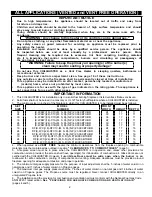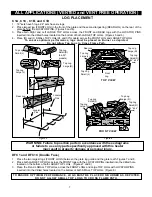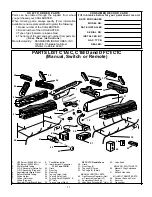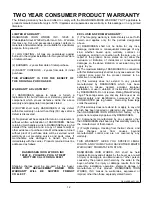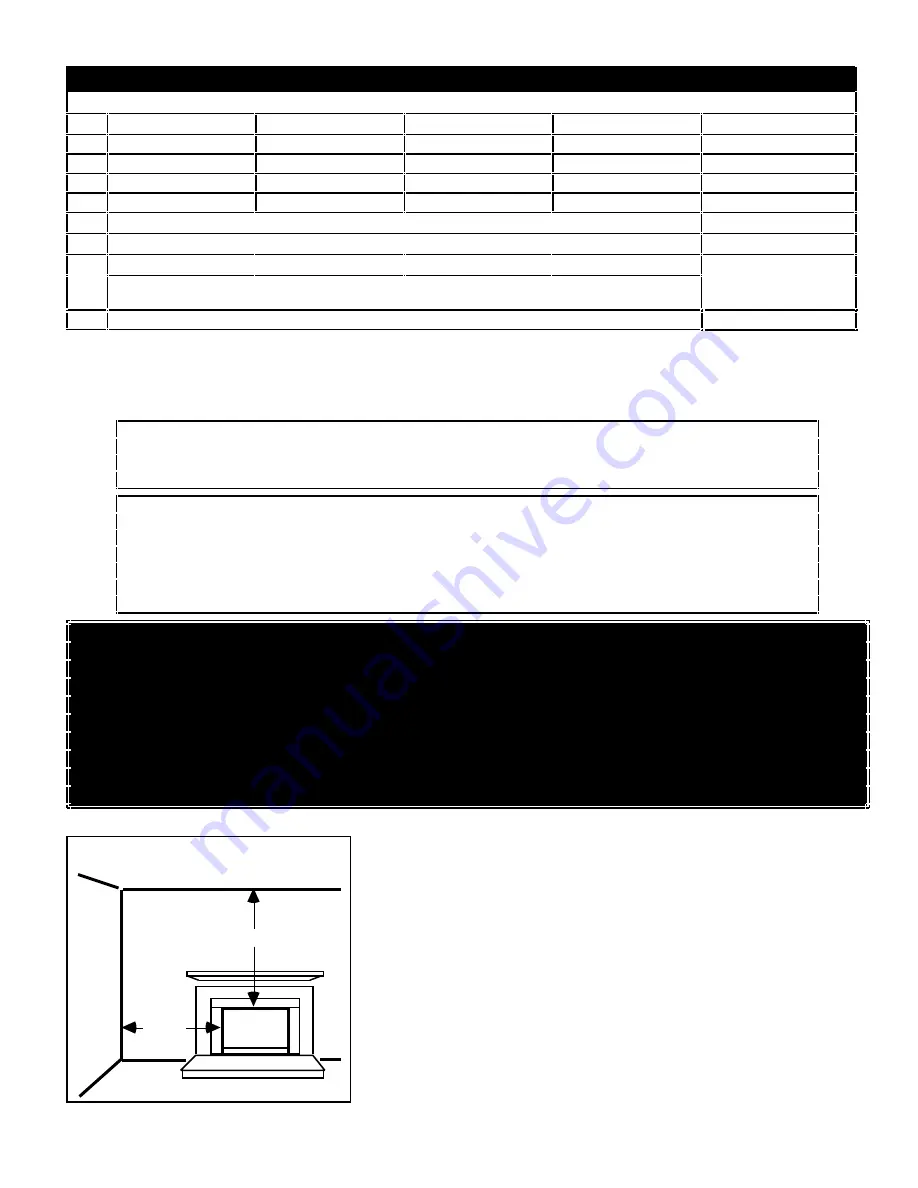
VENT FREE OPERATION
COMBUSTION AIR CALCULATIONS WORKSHEET
1 .
Room
Width
Length
Height
W
x
L
x
H=Vol. (ft3)
1 a .
1 b .
1 c .
1 d .
2 .
Total Volume (ft3 )sum of Volume (ft3) of all rooms (sum lines 1a. thru 1d.) 2 .
3 .
Max Supportable Btu/Hr=Total Volume (ft3) ÷ 50 x 1000 (line 2 ÷ 50 x1000)
3 .
4 .
4 a .
3
Btu/hr 4 b .
3
Btu/hr 4 c .
3
Btu/hr 4 d .
3
Btu/hr
Actual Btu/hr used = Sum Btu/hr of all fuel burning appliances inside the space
identified as rooms 1a. thru 1.b (sum line 4a thru 4d.) 4 .
5 .
(Maximum Supportable Btu/Hr) minus (Actual Btu/hr Used) (Line 3 - line 4)
5. *
*
If Line 5 is greater than zero, the Actual Btu/Hr Used is less than the Maximum Supportable Btu/Hr
and the space is considered UNCONFINED. No additional fresh combustion and ventilation is required.
*
If Line 5 is zero or less, the Actual Btu/Hr Used is greater than Maximum Supportable Btu/Hr and
the space is CONFINED. You must either increase the Maximum Supportable Btu/Hr, decrease
the Actual Btu/Hr Used or operate as a Vented Appliance (see page 3).
WARNING: If the area in which the heater may be operated is smaller than that defined
as an unconfined space or if the building is of unusually tight construction, provide
adequate combustion and ventilation air by one of the methods described in the
National Fuel Gas Code, ANSI Z223.1, 1992, Section 5.3 or applicable local codes.
Unusually tight construction is construction where:
a) Walls and ceilings exposed to the outside atmosphere have a continuous water
vapor retarder with a rating of 1 perm or less with openings gasketed or sealed, and
b) Weather stripping has been added on openable windows and doors, and
c) Caulking or sealants are applied to areas such as joints around window and door
frames, between sole plates and floors, between wall panels, at penetrations for
plumbing, electrical, and gas lines, and at other openings.
WARNING: CARBON MONOXIDE POISONING MAY LEAD TO DEATH
When used without fresh air, gas log sets may give off carbon monoxide, an odorless, colorless,
poisonous gas. Some people, pregnant women, persons with heart or lung disease, anemia, or under
the influence of alcohol and persons at high altitudes are more affected by carbon monoxide than
others. Early signs of carbon monoxide poisoning resemble the flu: Headache, dizziness, and/or
nausea. If you have these signs, the gas log may not be installed or working properly, or the chimney
flue may be blocked. GET FRESH AIR AT ONCE! Have gas log set and chimney flue serviced
before using again.
OPEN A WINDOW AN INCH OR TWO FOR ADEQUATE COMBUSTION AND
VENTILATION AIR WHEN USING YOUR VENT FREE GAS LOG ROOM HEATER
MINIMUM CLEARANCES TO COMBUSTIBLES
MINIMUM CLEARANCES
TO SIDE WALLS AND CEILING
42"
15 1/2"
Figure 1
Clearances to Combustible Construction:
Side wall: 15 1/2" from side of fireplace opening. Figure 1
Ceiling:
42" from top of fireplace opening. Figure 1
Mantel: See Charts and Diagrams shown at Figures 2 and 3
N O T E : "Clearances to Combustible Construction" are those distances
required to ensure that a fireplace mantel or facing will not catch fire. In
most cases they should also be adequate to prevent any discoloration or
warping due to heat. However, each and every Gas Log Installation
(CHILLBUSTER included) presents a different and completely unique set
of circumstances involving many variables beyond the control of the Gas
Log Manufacturer. These include paint or finish composition, previous
exposure to heat, methods and quality of construction, air flow patterns,
glass doors, fans or blowers, etc.. Because of these variables, we cannot
guarantee that heat warping or discoloration will never occur. The potential
for heat warping or discoloration may exist whether you are burning a
CHILLBUSTER, some other manufacturer's Gas Log or even wood.
5


